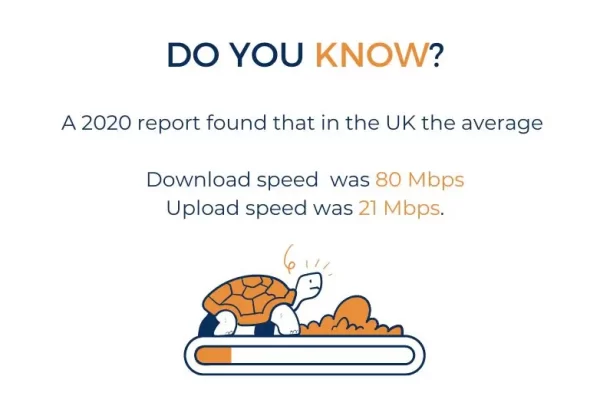
Traditional, Remote, or Hybrid Work model? In recent years, especially since the pandemic, we have seen that business work models have changed. Of course, for decades people have been working from offices, both big and small. However, did you know that this traditional working model is relatively new?
The Evolution Of The Office
Work has not always been located in a specific place that we call “the office”. Gideon Haigh wrote in his book “The Office: A Hardworking History” that the office was “an activity long before it was a place”, but what does that mean?
Even though it is claimed offices were first found in ancient Rome, it is known that by medieval times people used to work from home offices. According to Witold Rybczynski, it was only in the seventeenth century that this slowly started to change. At that time lawyers, civil servants, and other new professionals began to work from small offices in Amsterdam, London, and Paris.
Despite these early offices, working from home remained the rule. It was not until 1726 that the first office building, “The Old Admiralty Office”, was built in London. Its purpose was to help the Royal Navy manage the masses of paperwork it generated.

From that moment, especially over the nineteenth and twentieth centuries, increasingly specialized office designs reinforced a distinction between work and home. The earliest modern offices had a scientific approach that emphasized efficiency with a rigid office layout. Workers sat at endless rows of desks with managers in encircling offices where they could observe. This working model has changed over time in line with business objectives and social, economic, and cultural norms. No working business model has ever been static.
GET IN TOUCH!
We want to hear about your challenges. Talk to us! Our consultants can audit your systems, plan changes, implement improvements and support your people.
Technology In The Office: Changing The Business Work Models
Usually, when we think about technology in a modern business, we think about big screen monitors, tablet computers, headsets, digital pens, Bluetooth keyboards, and an endless list of gadgets (that you can find in our store). However, some decades ago, technology did not look like that. How it has revolutionized the business world is impressive.
By the end of the nineteenth and the beginning of the twentieth century, offices were located next to factories to provide their administration support activities. It was inventions such as Morse’s telegraph, Bell’s telephone, and Edison’s dictating machine, which enabled offices to relocate to big cities, causing cultural change in our society.
In 1961, IBM developed The Selectric Typewriter. This was introduced into offices, creating a new form of human and computer interaction. The typewriter keyboard as we know it today, is still indispensable. By 1964, IBM had introduced a magnetic card that could store information on a typewriter. It may now look like a small step, but this was the start of computer-based work and is the basis of our modern way of working.
Since the 1960s, technology has evolved in ways that were unimaginable then. The appearance of the Internet, the first desktop computers, laptops, fax machines, mobile phones, social networks, headsets, interactive displays, cloud systems, networks, artificial intelligence and the Internet Of Things. How technology has changed the way we work is huge. The digital transformation of the last decades has been enormous. It has transformed not only our culture, society, the markets and the economy, but how we as individuals and businesses behave and work.
For a quick tour of the evolution of technology, take a look at this video:
Networks Connectivity: Emerging New Work Models
Digital technologies have changed the world and the way people interact with each other both on a personal level and for business. As the world becomes more connected, it is increasingly important for people to be able to work from wherever they are.
There are many work model solutions available, though here we are going to focus on the three most popular work models that you find in the business world today.
1: Working From An Office: The Traditional Work Model
The traditional work model is the one that most people are familiar with and that was the norm before the Covid pandemic. Employees work in an office together, between certain hours and take breaks at set times. Whilst this type of work tends to be very structured, it can also be inflexible, making it difficult to juggle personal and professional obligations.
Pros:
- Work is usually very structured, which makes it easier to manage.
- There is usually a set break schedule, which helps ensure that employees are refreshed and ready to continue working.
- It is easy for teams to communicate and work with each other.
Cons:
- It can be inflexible and onerous to juggle personal and professional obligations.
- Employees may find their creativity and innovation stifled.
- Employees have to travel to work. They spend time commuting and money on transport.
2: The Remote Work Model: Working From Home Once Again
Remote working has its origins as far back as the Romans. This is the model where employees work from home either every day, or on a regular basis. It is also known as the Virtual Work Model or Home-Based work model. Businesses often use this type of work model for employees who need to travel frequently for work or who are remote from their corporate offices. There are many benefits to the home-based work model, including increased flexibility and improved productivity.
The remote work model is becoming increasingly popular as it offers many benefits over the traditional work model. For example, employees, provided they have an Internet connection, no longer need to commute long distances to their office and can work from anywhere. This model is flexible for employees too as they can adapt their working hours to fit their lifestyles.
Pros:
- The remote work model is much more flexible than the traditional work model.
- The employee pool is expanded. You can hire people from anywhere in the world.
- It is often more productive due to increased flexibility.
- Employees can often take full advantage of their creativity and innovation potential.
- You reduce your carbon footprint by eliminating the commute to work.
Cons:
- Some employees may need help adjusting to working from home.
- It may be more challenging to create a company culture.
- Employees may feel more isolated without the regular interaction with their colleagues.
- Without appropriate technology, teamwork and collaboration can be difficult.
- Training and learning new skills can be more challenging particularly for ‘new starters’.
The Covid pandemic forced companies, wherever possible, into allowing employees to work from home. This was the start of a digital transformation for many businesses who started to introduce cloud technology. This allowed them to give their employees the tools to work remotely and improve employee productivity even in uncertain times.
But with the pandemic over and business slowly returning to normal, some industries wanted their employees to return to the office. But the Covid-19 pandemic once again changed society and its individuals, who found a new way to work from home, be productive, and find a healthier balance between their personal life and work. And this is how the Hybrid Model arises.
The Hybrid Work Model, also known as the Flexible Working Model, or Telecommuting Work Model, combines the traditional office setting with the option to work from home or ‘on the go’.
3: The Hybrid Work Model: A Healthier Work-life Balance
The Hybrid Work Model, also known as the Flexible Working Model, or Telecommuting Work Model, combines the traditional office setting with the option to work from home or ‘on the go’. This work model is becoming increasingly popular compared to the traditional work model. The Hybrid Work Model offers the best of both worlds. It gives increased employee flexibility and makes it easier to collaborate and socialize with colleagues, so fostering better team dynamics and personal well-being. Commuting and time spent travelling is also reduced leading to a healthier work-life balance.
Pros:
- The hybrid work model offers the employee excellent flexibility.
- It generates and strengthens employee loyalty.
- Business and individuals alike, reduce their carbon footprint by eliminating the commute to work, and contribute to reducing traffic congestion.
- Businesses can reduce their overheads by reducing their office space as employees come into the office on a ‘rota’ basis or sit at hot desks.
Cons:
- Communications delays and disruption due to people not being available when you need them.
- Workflows challenges when systems and processes are not clearly defined.
- Cybersecurity breaches where employees are on their own at home.
Since the pandemic, companies are focussing on Hybrid Work. Many people prefer it. According to data from the Opinions and Lifestyle Survey (OPN), more than 8 in 10 UK workers want to keep working in a hybrid work model. So, it is fair to say that for the time being, “Hybrid work is here to stay”.
There are companies that are very concerned about how effective the Hybrid Work model is. There are both practical and personnel considerations. From how much will the technology I need cost, to is it difficult to implement, to can I trust my employees?
One thing that history teaches us is that there is constant change. Technology has been, and still is, a key driver in how we live and work. This is not going to change. The pace of technological change is accelerating and will continue to evolve and revolutionize the way we live and our business practices.
Whilst hybrid working may be new, it is bringing with it a new wave of business transformation. We must adapt to the times we find ourselves in to stay relevant and to prosper. From a business perspective, this means developing a digital transformation strategy and the adoption of the new business tools available to us today. These will boost business productivity and ensure survival in a competitive marketplace.
GET IN TOUCH!
We want to hear about your challenges. Talk to us! Our consultants can audit your systems, plan changes, implement improvements and support your people.
Stay Up to Date With Us
Subscribe to Our Newsletter
Follow Us
Click below to explore our feeds!
Services
IT Consultancy
Communications Services
Service Levels
Resources
Terms & Conditions
Privacy Policy
Mobile Roaming
Quick Links
Success Stories
Contact US
About US
Blog
GET YOUR FREE IT AUDIT!

To give you confidence in our service, get to know us and how we work, contact us for your Free IT Audit.
The IT Audit
- Provides us with the information to assess the status of your systems.
- Identifies any vulnerabilities and potential concerns.
- Shows you how we manage your systems and report back.
GET IN TOUCH!
We want to hear about your challenges. Talk to us! Our consultants can audit your systems, plan changes, implement improvements and support your people.
Call us on 0118 920 9420
Email us [email protected]





